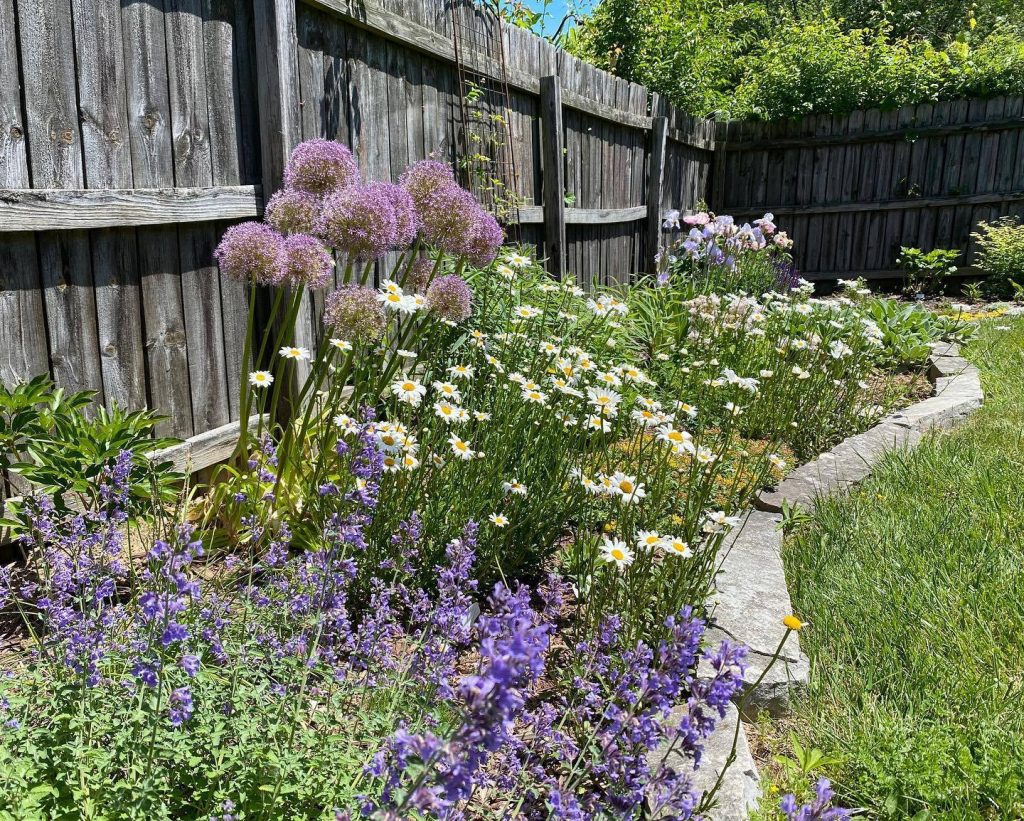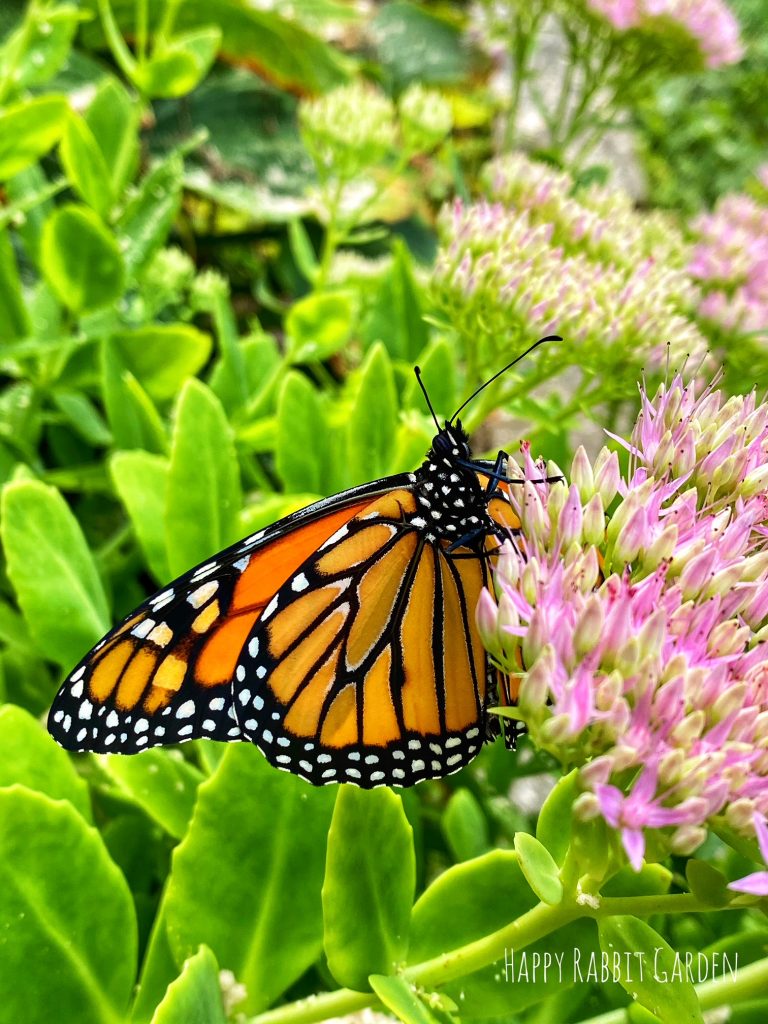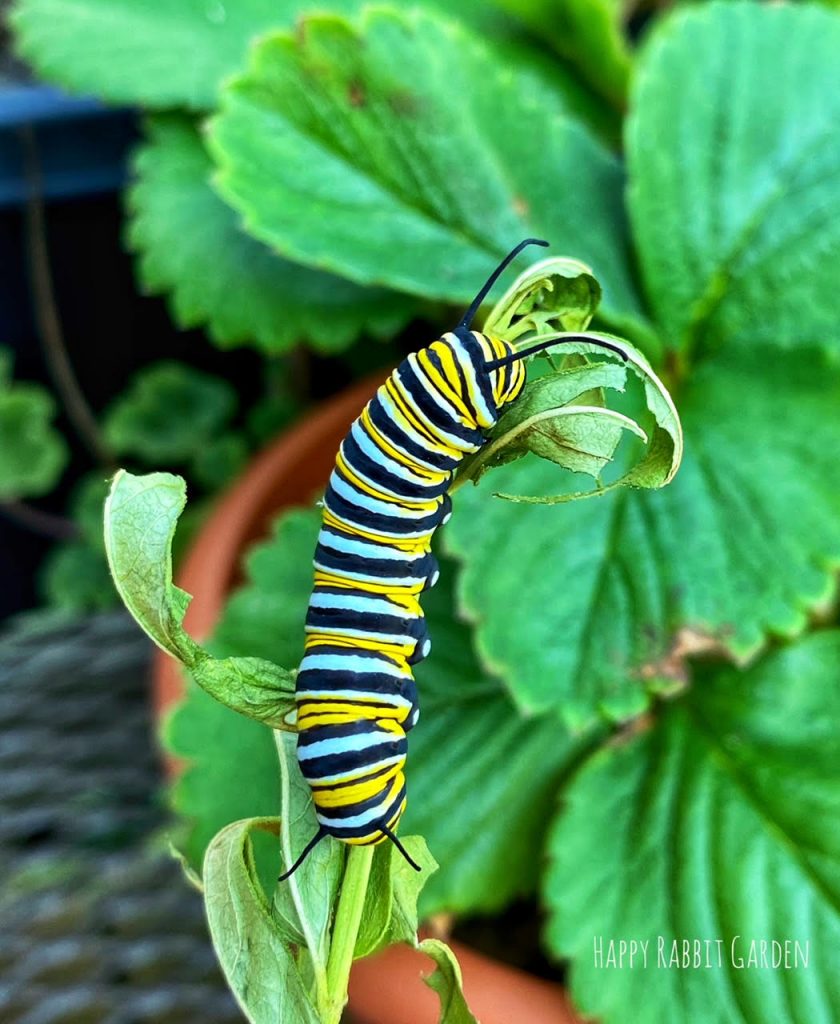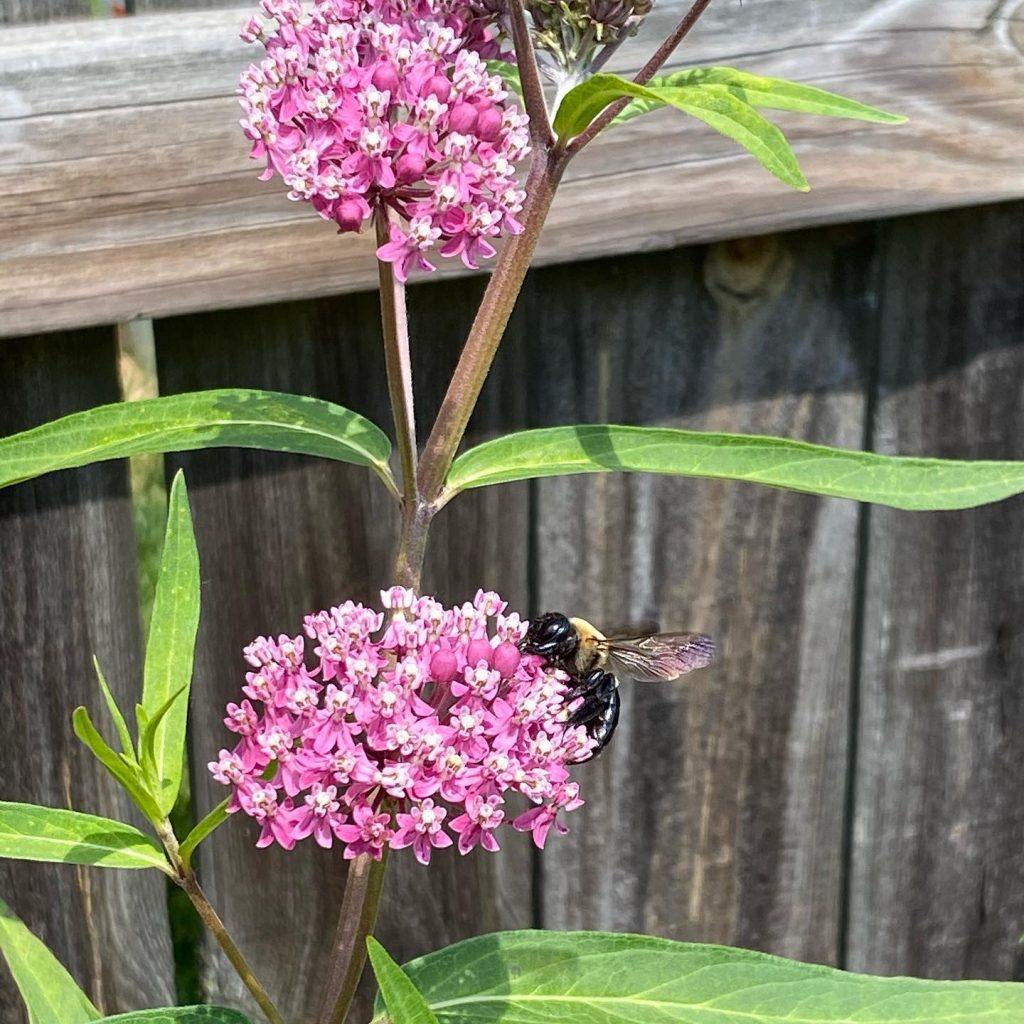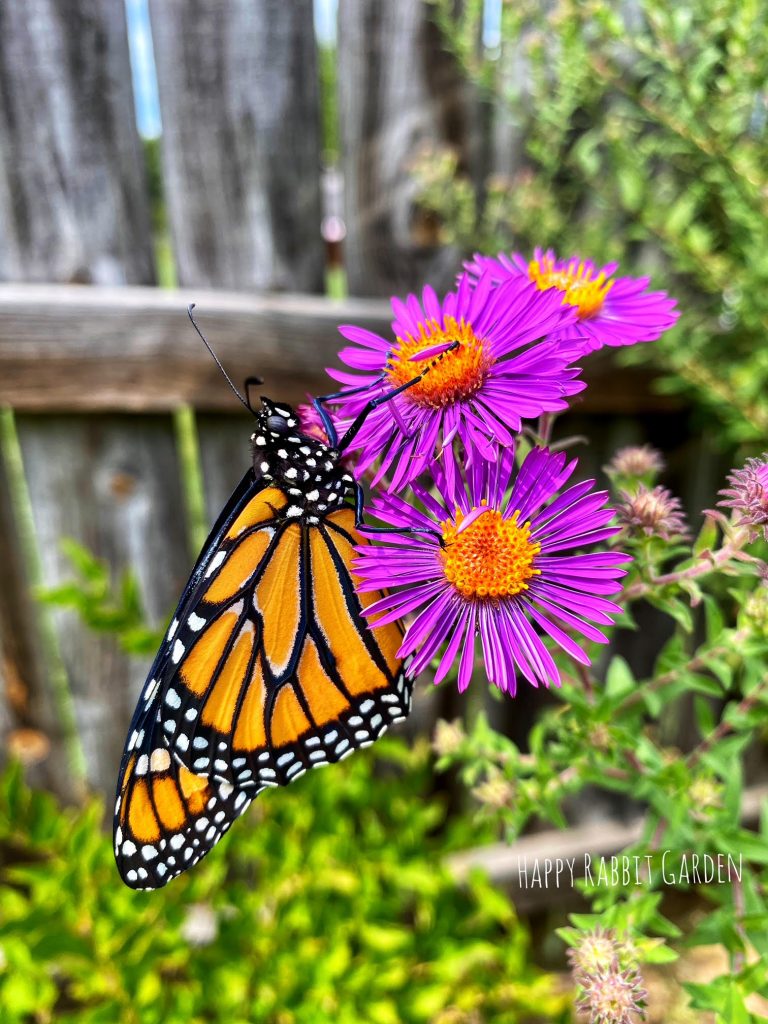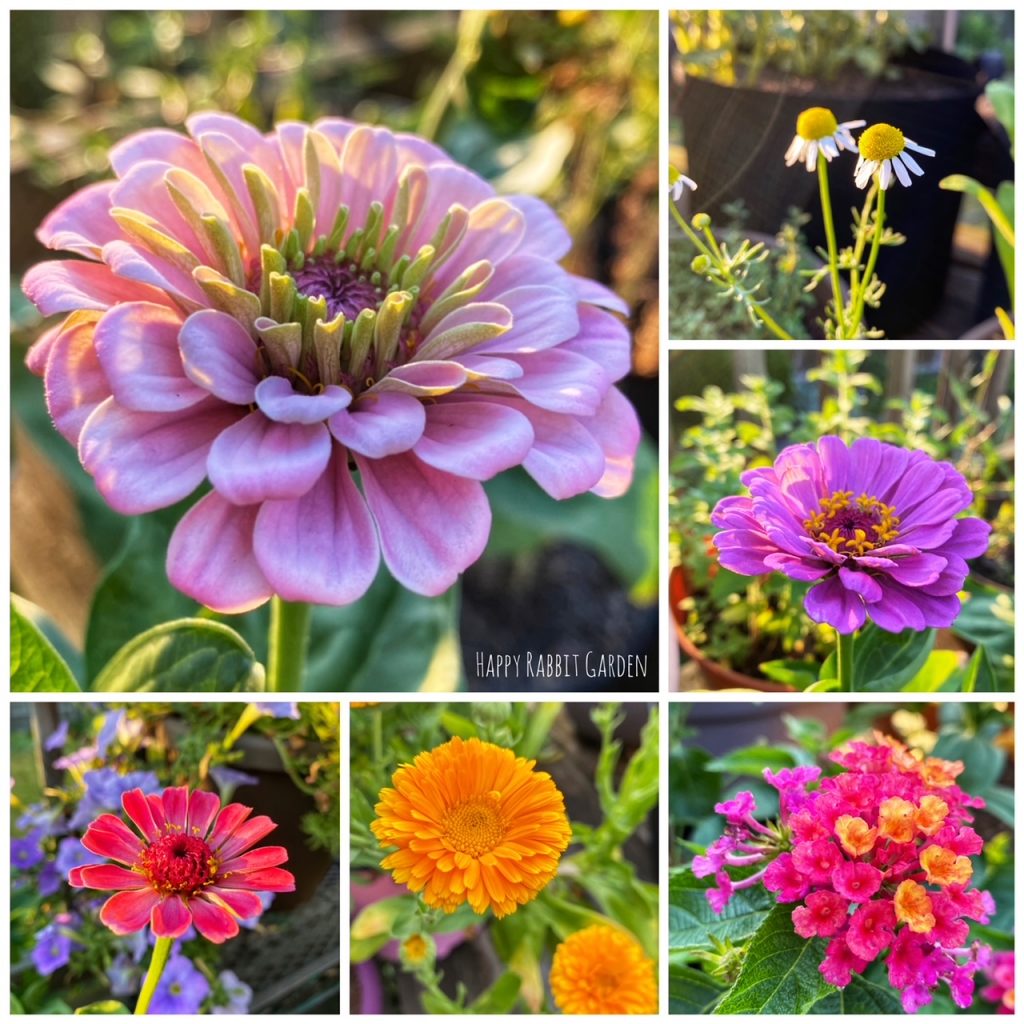
It’s almost July, which doesn’t seem possible. I started this blog in January, when the gardens were sleepy and cold. Things couldn’t look, or feel, more different outside right now. The summer heat and humidity continues, and the garden is full of life. The yard is a blaze of color, with bees and other insects working hard. The bees seem to take a break in the midday heat, but in the mornings and evenings, they are pollinating away, bouncing around from flower to flower. I’ve spent some time this past week just sitting in the grass watching them. It’s fascinating and peaceful observing them “at the office.”
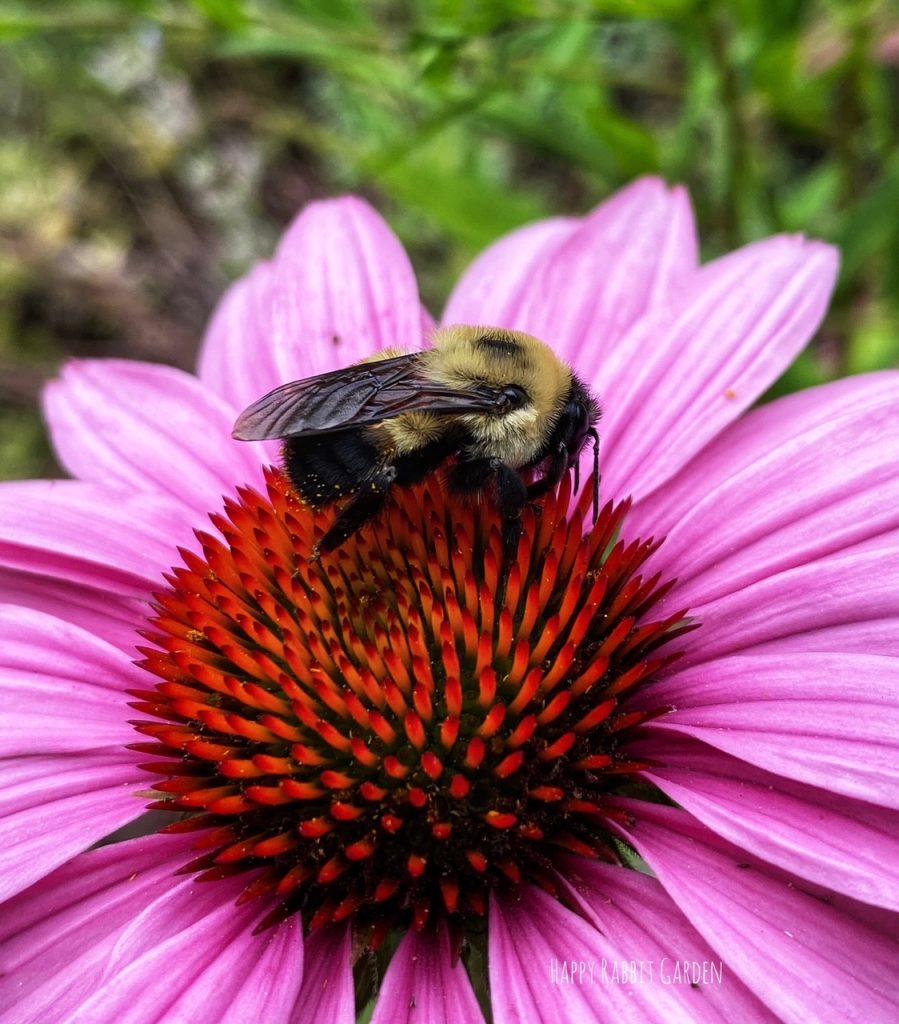
We had a few days with nice, cool weather earlier last week. The husband helped me dig out the rest of the sod for our final project of the season: the new pollinator bed in the front yard. Once the lawn was out, I planted up all the flowers and grasses that I’d been growing on the back porch and mulched the space up. I am pretty pleased with the final results. There’s little bluestem, prairie dropseed, prairie blazing star, prairie smoke, nepeta, two types of thyme, candytuft, and some daisies. The space will have color and interest all year long, and provide shelter and food for the local pollinators. Most of the plants I put in are native to our area, and everything in there is a perennial, so the bed will continue to grow and thrive without much of any work from me.
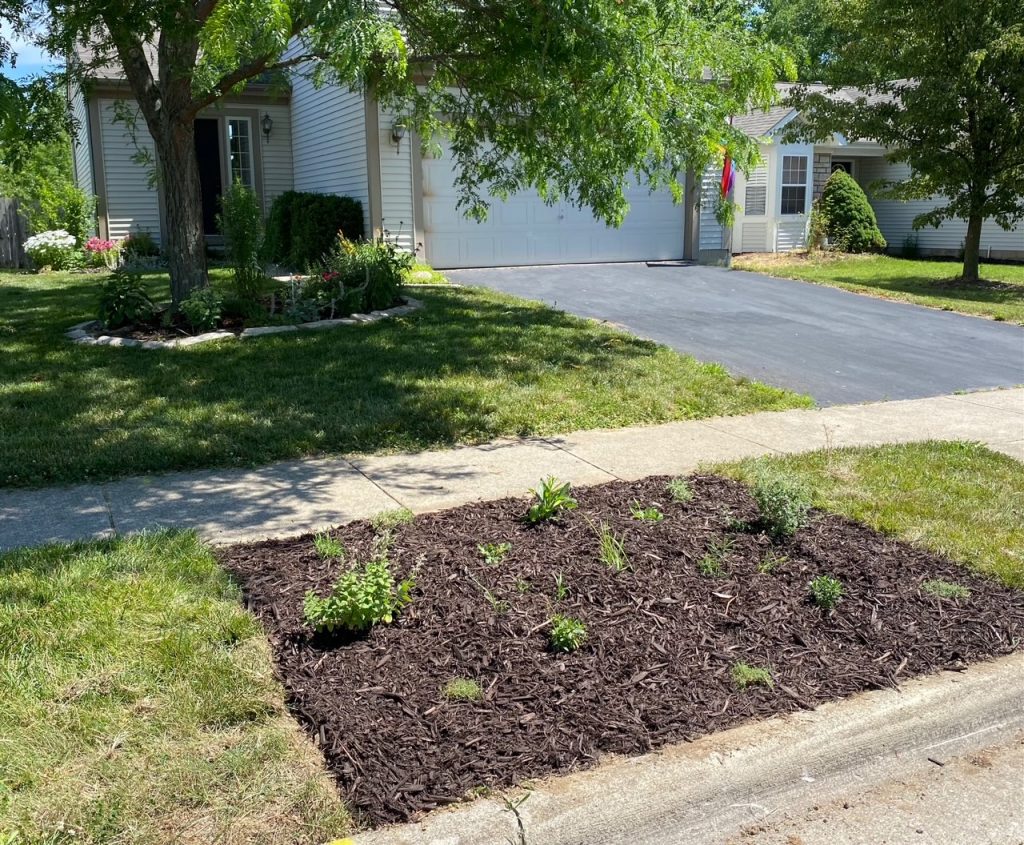
In the back yard, all of our crops are filling in nicely. The lettuce is about finished for the season (it just gets too hot here in the summertime, and it bolts), but the other veggies seem to be enjoying summertime. Our peppers, tomatoes, carrots, beans, pumpkins, leeks, potatoes, parsnips, and garlic seem to be growing well. Actually, I was able to harvest a few garlic scapes this weekend, which I am really excited to eat. All of the herbs are looking nice, too. I’ve been harvesting parsley, chives, oregano, mint, and basil every week, and each are still growing strong.
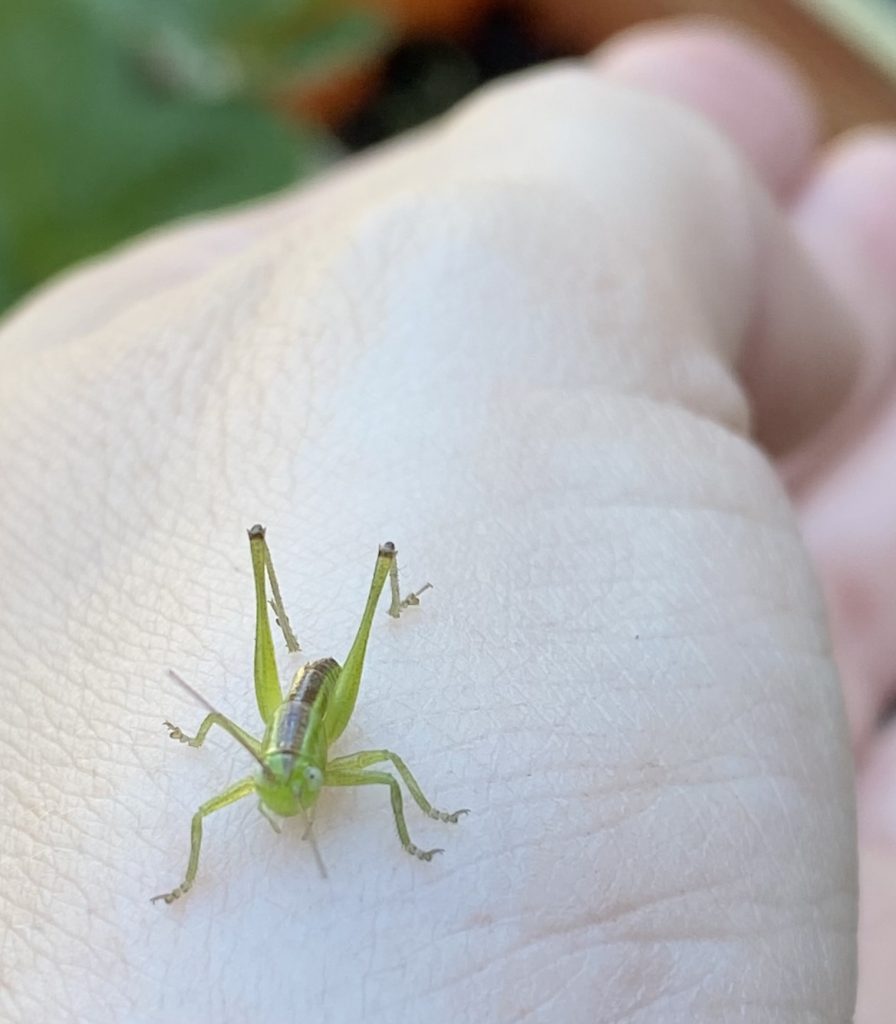
Out in the wildlife pond, the cheap little solar fountain I’d bought decided to stop working. I replaced it with a bubbler under the water, and so far, I’m liking that even better. It really moves the water around, and hopefully the sound will attract more birds to the space. There’s lots of spiders around now, probably enjoying the bugs that pop by for a drink. I saw some really pretty green orchard spiders, hanging under their webs. Spiders kind of give me the heebie jeebies, but I respect their work ethic, and, as someone who also likes to weave, I am pretty enamored with their gorgeous webs.
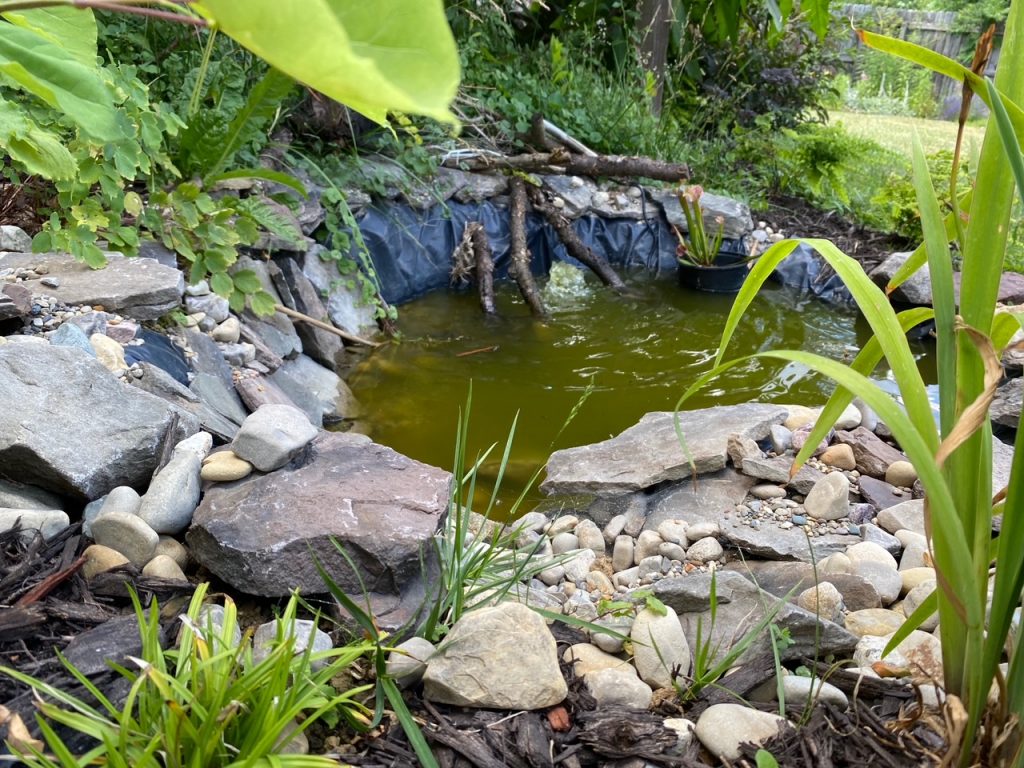
I’ve been keeping an eye out each day for some of my favorite butterflies, the black swallowtails. I’d seen a few flying around, but hadn’t found any eggs yet. This morning, while watering the veggies, I happened to spot a tiny little black swallowtail caterpillar! I quickly escorted it into our mesh butterfly house on the deck, with some dill to eat. The butterfly house lives outside, and the caterpillars I move into it are protected from predators. They grow up fairly quickly, especially in warm weather. I’ll track this ones progress as it grows up and then forms a chrysalis before transforming into a butterfly. The whole process usually only takes a few weeks, and is definitely the highlight of my summer.

It’s ironic- the garden looks great and so much is in bloom right now, but there’s very little work to be done, for me, at least. The plants and flowers have grown to keep weeds out (mostly), and I don’t have any more planting to do at the moment (though I’m sure I’ll come up with something). It’s warm and sunny, but I can relax. And, actually, that’s kind of the point. I do really enjoy the planting and the work- I’m a process person. However, being able to slow down for a bit to watch the flowers grow, and all the birds, insects and critters that I share the yard with, is a real treat. Hopefully you are able to take some time out this week to sit back as well. Happy gardening!

